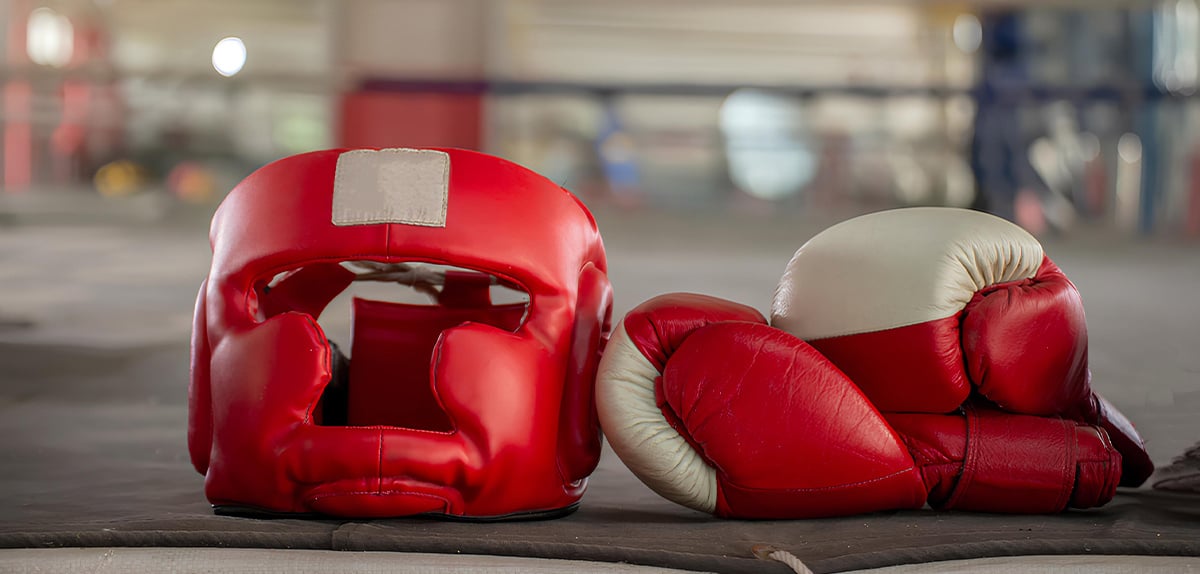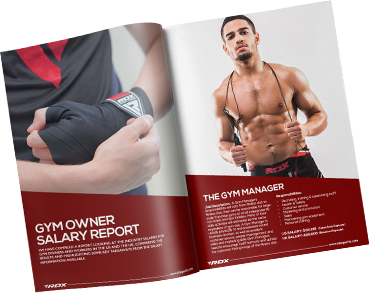Ensuring the quality of your MMA gear can be the difference between a productive training session and a harmful injury. As a wholesaler, it’s essential to distribute gear that meets rigorous quality standards, as this is critical for maintaining your reputation and ensuring the safety of your customers.
However, navigating all the different certifications and standards can be challenging. It takes knowledge, practice and diligence before one can verify the certification perfectly.
In this blog, we'll explore the critical role of quality certification in the MMA gear industry and offer practical tips to help you verify the authenticity and reliability of these certifications.
Whether you're new to the industry or looking to refine your vetting process, this guide will provide valuable insights to help you make informed decisions.
Basics of MMA Gear Certifications

Successfully navigating the world of MMA gear certifications means understanding the different types available and what they signify about product quality. Here are some key certifications to be aware of:
ISO Standards (International Organisation for Standardisation):
ISO 9001: This certification focuses on quality management systems and ensures that a company consistently provides products that meet customer and regulatory requirements.
CE Marking:
The CE Marking indicates that a product conforms to European health, safety, and environmental protection standards. It's a requirement for products sold within the European Economic Area (EEA).
ASTM (American Society for Testing and Materials):
ASTM provides international standards across a wide range of materials, products, systems, and services. For MMA gear, ASTM standards might cover things like material durability, impact resistance, and safety.
OEKO-Tex Standard 100:
Standard 100 ensures that textiles are free from harmful substances. It's particularly important for MMA apparel and gloves, ensuring that the fabric does not contain chemicals that could be harmful to the skin.
IMMAF (International Mixed Martial Arts Federation):
The IMMAF certification is specific to MMA and ensures that the gear meets the safety and quality standards set by the governing body of amateur MMA. This can include gloves, headgear, and other protective equipment.
IBA (International Boxing Association):
Similar to IMMAF, the IBA certifies equipment for boxing, which can overlap with MMA gear. This ensures that gloves, wraps, and other gear meet specific safety and performance standards.
Related Article: IMMAF Namibia Championships are Shaping the Future of Pro-MMA
Behind the Certificates:
MMA gear certifications are not hollow badges or meaningless stamps that these products have. There is a solid meaning, a quality assurance behind each and every certificate that's awarded to a product.
Here’s a look at the rigorous testing and standards involved:
Material Testing:
Gear undergoes tests for durability, elasticity, and impact resistance. For instance, gloves are tested for their ability to absorb and distribute shock to prevent injuries.
Chemical Safety:
Materials used in gear, especially textiles, are tested for harmful substances. Certifications like OEKO-Tex 100 ensure that gear is safe for prolonged skin contact and does not contain toxic chemicals.
Performance Standards:
Gear is evaluated for its performance under stress. This includes testing for tear resistance, flexibility, and the ability to withstand repeated use without degrading.
Fit and Comfort:
Certified gear must provide a proper fit and comfort. This involves ergonomic testing to ensure that the gear supports natural movement and does not cause discomfort or restrict performance.
Environmental Standards:
Some certifications, like CE Marking, also require that the gear meets environmental protection standards, ensuring that manufacturing processes are sustainable and environmentally friendly.
Practical Tips for Verification
Ensuring that the MMA gear you distribute is genuinely certified is crucial for maintaining product quality, safety, and trust with your customers. You don’t want your customers to have a fake product and never trust you again. You can’t rest assured with a word of mouth regarding quality certifications and that's where you need to know how to check if the certifications are indeed real.
Here are some practical tips for verifying the authenticity of certifications to ensure you're providing real, certified products rather than items with fake certifications.
Visual Inspection
One of the first steps in verifying certification authenticity is a thorough visual inspection of the gear:
- Look for official certification marks or labels on the product. These could include ISO, CE, ASTM, Oeko-Tex, IMMAF, or IBA logos. Ensure these marks are clear, properly placed, and not tampered with.
- Verify that product labels contain detailed information such as the manufacturer’s name, product specifications, and certification details. Authentic labels will have consistent and professional printing without spelling errors or poor-quality graphics.
- Authentic certified products often come in high-quality packaging with certification details clearly marked. Examine the packaging for any signs of tampering, missing information, or low-quality printing, which could indicate counterfeit products.
Documentation Review
Reviewing and verifying certification documents is the next important step:
- Always ask your supplier for copies of the certification documents related to the MMA gear. These should include test reports, compliance certificates, and any other relevant documentation.
- Contact the organisations that issued the certifications to verify the authenticity of the documents. For example, you can reach out to ISO, CE, ASTM, Oeko-Tex, IMMAF, or IBA to confirm whether the certification is legitimate and current.
- Certification documents often have validity periods. Ensure the certifications are up-to-date and can't expired. An expired certification might indicate that the product no longer meets current safety and quality standards.
Supplier Verification
Assessing the credibility of your suppliers is essential to ensure their certification claims are genuine:
- Conduct thorough research on the supplier. Check online reviews, ratings, and feedback from other businesses that have worked with them. A reputable supplier is more likely to provide genuinely certified products.
- If possible, visit the supplier’s manufacturing facilities. This allows you to see their operations firsthand and verify that they adhere to the claimed certification standards.
- Consider hiring third-party auditors to evaluate the supplier’s compliance with certification standards. These auditors can provide an unbiased assessment of whether the supplier’s products truly meet the required standards.
- Ask suppliers for references from other businesses that have purchased their certified products. Contact these references to inquire about their experience and satisfaction with the supplier’s gear and certification claims.
Related Article: Finding the Right MMA Gear: Which Certifications Matter?
Overcoming Common Challenges
Verifying quality certifications can be a daunting task but that right there is the backbone of your business. You can’t ignore it just because it's lengthy and cumbersome. So, here is how to ensure your quality certifications are always spot on and how keep ensuring it over and over again:
- Educate Yourself on Genuine Certifications: Familiarise yourself with the appearance and characteristics of authentic certification marks and labels. Know the common logos, their placement, and specific details that can differentiate genuine marks from fakes.
- Use Verification Tools: Many certification bodies offer online tools or databases where you can verify the authenticity of a certification. For example, ISO and CE marking databases allow you to enter certification numbers and confirm their validity.
- Check for Holograms and Security Features: Some certifications include holograms, QR codes, or other security features that are difficult to replicate. Use these features to verify authenticity by scanning QR codes or inspecting holograms under light.
- Work with Trusted Suppliers: Establish relationships with reputable suppliers known for their adherence to certification standards. Vet new suppliers rigorously, checking their history, reviews, and business practices.
- Be Wary of Unusually Low Prices: If a deal seems too good to be true, it often is. Extremely low prices can be a red flag for counterfeit products. Balance cost with the assurance of certified quality.
- Regular Audits and Spot Checks: Conduct regular audits of your inventory and perform spot checks on new shipments. Verify the certifications of random samples to ensure consistency and authenticity across batches.
Staying Updated
Keeping up-to-date with changes in certification standards and requirements is crucial for maintaining compliance and ensuring product quality.
Here’s how to stay informed:
- Subscribe to Industry Newsletters: Join mailing lists of relevant certification bodies and industry organizations. These newsletters often provide updates on changes to standards, new certification requirements, and best practices.
- Participate in Industry Conferences and Workshops: Attend conferences, workshops, and seminars related to MMA gear and sports equipment. These events are valuable for networking, learning about the latest trends, and understanding upcoming changes in standards.
- Join Professional Associations: Become a member of professional associations such as the International Mixed Martial Arts Federation (IMMAF) or the International Boxing Association (IBA). These organisations often provide resources and updates on certification requirements.
- Regularly Review Certification Body Websites: Frequently visit the websites of key certification bodies like ISO, ASTM, CE Marking authorities, and Oeko-Tex. These sites often have news sections or update pages that provide the latest information on certification standards.
- Engage with Regulatory Consultants: Consider hiring regulatory consultants who specialise in certification compliance. They can provide expert advice, help you interpret new standards, and ensure your products remain compliant.
- Set Up Alerts: Use online tools to set up alerts for news and updates related to MMA gear certification. Google Alerts, for example, can notify you of new information about certification changes and updates.
- Training: Invest in continuous training for your team. Ensure that staff responsible for compliance and quality assurance are regularly updated on the latest certification standards and practice.
Conclusion
Ensuring the quality and authenticity of MMA gear is crucial for safety and performance. Verifying quality certifications involves conducting visual inspections, reviewing documentation, and assessing supplier credibility.
It's essential to navigate the complex world of MMA gear certification and stay updated on evolving standards. Conducting visual inspections, reviewing documentation, and assessing supplier credibility are key steps in this process.
RDX Sports is a leader in providing certified, high-quality MMA gear. Known for their commitment to safety and performance, RDX Sports ensures that their products meet rigorous standards.
Wholesalers can trust RDX Sports for reliable, certified gear that enhances training and competition. By partnering with RDX Sports, you can ensure your customers receive the best in certified MMA equipment.
Read More
- Empowering Women in Sports: Strategies for Inclusion
- Jumpstart Your Fitness: 5 Unique Jump Rope HIIT Workouts to Torch Calories and Boost Strength
- Redemption or Revolution? Joshua vs. Ngannou in the Knockout Chaos
- The Ultimate Guide to Kids Boxing Gloves: Safety, Sizing, and Selection
Related Articles:
How To Make Your Own E-commerce Website From Scratch


